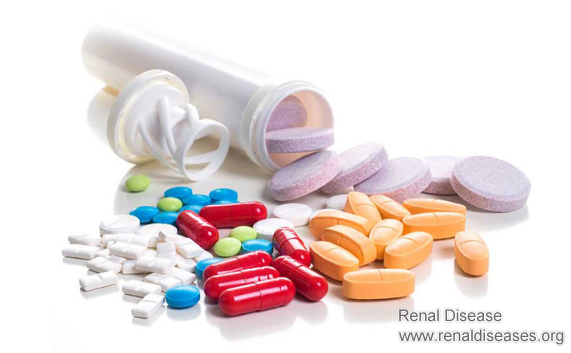Whatsapp: +8615512139310
- Email us:

When it comes to treating kidney disease and lowering proteinuria, there are a lot of drugs we have used, but they are more or less toxic. For example, cyclophosphamide can cause liver damage; Leflumide causes hair loss and blood pressure to rise; and hormone can raise blood sugar, and cause femoral head necrosis and so on.
Today, we're going to talk about a protein-lowering drug that has a very strong side effect, but works well, and it's very popular in renal medicine.
The drug, originally used only for the postoperative anti-rejection treatment of each organ transplant, now is widely used in the treatment of kidney diseases, autoimmune diseases and blood system diseases.
At present, many refractory nephropathy treatment is inseparable from it.
Do you know what is it?
It is tacrolimus, also known as prograf.
Then do you know which kidney disease can be treated with tacrolimus, and what food and medicines should be avoided when taking it?
In fact, tacrolimus is an immunosuppressant. Like cyclosporine, it is a calcineurin inhibitor.
6 kinds of kidney disease can choose tacrolimus.
3. Membranous Nephropathy
4. Glomerular minimal change disease
5. Lupus Nephritis
6. Renal damage caused by rheumatoid arthritis
Foods to be avoided with Tacrolimus
1. Grapefruit
Grapefruit and a variety of grapefruit juice drinks can cause blood levels of tacrolimus to spike, putting patients closer to and at greater risk of adverse reactions.
2. Tea, tea beverage
3. Others
Such as beer, pomegranate juice, wine, chili, soy, ginger, and so on, will also have an impact on tacrolimus concentration, which should also be avoided as far as possible.
Medicine that affects tacrolimus
1. The blood concentration of tacrolimus can be significantly increased
Antifungal agents (ketoconazole, fluconazole, voriconazole, etc.)
Macrolides (e.g., erythromycin)
Calcium channel blockers such as diltiazem
2. The blood concentration of tacrolimus can be significantly reduced
Liver enzyme inducers such as rifampicin, carbamazepine, phenobarbital, phenytoin, octreotide, orlistat and glucocorticoid
Various drugs containing aluminum magnesium such as aluminum hydroxide, magnesium hydroxide, magnesium hydroxide can increase the exposure of tacrolimus and should be avoided.
3. Some Chinese medicine
Glycyrrhiza, rhubarb, berberine, rhubarb, schisandra chinensis, caryophyllin and other traditional Chinese medicine ingredients can affect the blood concentration of tacrolimus and should be avoided.
Side effects of Tacrolimus
Its side effects mainly include infections, nephrotoxicity, renal dysfunction, hyperglycemia, hyperlipidemia, hypertension, thrombotic microvascular disease, etc.
During the administration of tacrolimus, patients should be regularly reviewed (blood routine, blood glucose, blood pressure, blood lipids, liver and kidney functions, etc.) to avoid infection and sunburn.
Patients are advised to monitor tacrolimus concentration if the medicine has been used for at least 4 or 5 days, or you use some extra western medicine and Chinese medicine.
Whether it is tacrolimus or other drugs for proteinuria, to better protect the kidney, always pay attention to the contraindications of these drugs so as to avoid side effects and maximize the effect.
For more information on CKD treatment, please leave a message below or contact online doctor.